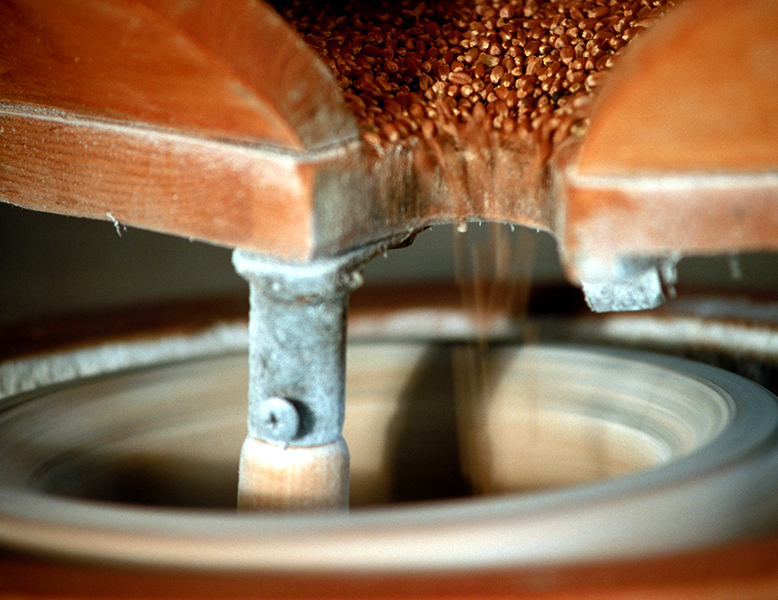
About Miller's Bake House
There's a story about John Lennon and Yoko Ono that caught my attention.
Apparently, Yoko was hosting an opening for her art show in London. John happened to pop in to check it out.
In the center of one room was a tall ladder. John walked over to the ladder and spotted a magnifying glass resting on the first step. His gaze turned up to the ceiling above the ladder where he could just make out a dark smudge, or dot. Up the ladder he climbed with magnifying glass in hand until he was close enough to the ceiling to see that the smudge was actually a word, in very small print. Holding the magnifier up he could just make it out. It said "YES".As the story goes, that's the moment John fell in love with Yoko.
This story was rattling around in my head, a few days after hearing it, when I walked into the shop of a newly opened bakery in St Paul, MN called Mill City Sourdough. On display was an array of dark, dense-looking loaves of bread that didn't look all that appealing. I took one home with me, anyway. I was curious. Expectations were not very high when I cut into the loaf, but as soon as the bread touched my tongue, my whole body had a John and Yoko moment. It said "YES".
That experience launched a long, wonderful, meandering journey of learning and baking that taught me an important lesson: How bread is prepared matters.
In the case of Miller's breads, careful preparation means using freshly milled whole grain flour and borrowing all of the enzymatic processes originally designed to facilitate the germination of the wheat seed into a living plant and, instead, using them to give life to a bread dough.
Amylase enzymes are busy turning carbohydrates to sugars, protease enzymes turn gluten proteins into amino acids, lypase enzymes turn lipids into fatty acids and so on. An additional inoculation of micro organisms is necessary to complete the fermentation process in bread dough. This comes from a sourdough culture which, on the face of it, is just a mixture of flour and water perpetuated from bake to bake. But when you look closer, it is a medium teaming with yeasts, enzymes, and bacteria. This culture leavens, conditions, flavors and partially breaks down complex substances in the dough so that our bodies can metabolize the wheat more readily. After the long fermentation, we cap the process by giving the breads a proper bake in our wood-fired oven. The result you see every Saturday morning at the market.
I know why my body said "YES" forty years ago. It's because the best food combines the pleasures of the palate with the deep sense of gratitude our body feels when we give it what it needs.
Michael Pollan, Cooked: A Natural History of Transformation:
"The kernels of wheat entered the aperture virtually in single file, as if passing between a thumb and an index finger. To mill any faster risked overheating the stone, which in turn risked damaging the flour. In this fact, Dave explained, lies the origin of the phrase "nose to the grindstone" : a scrupulous miller leans in frequently to smell his grindstone for signs of flour beginning to overheat. (So the saying does not signify hard work as much as attentiveness.) A wooden spout at the bottom of the mill emitted a gentle breeze of warm, tan flour that slowly accumulated in a white cloth bag. I leaned in close for a whiff. Freshly milled whole-grain flour is powerfully fragrant, redolent of hazelnuts and flowers. for the first time I appreciated what I'd read about the etymology of the word "flour" - that it is the flower, or best part, of the wheat. Indeed. White flour has little aroma to speak of; this flour smelled delicious."
Mr. Pollan made these observations during a visit to Miller's Bake House several years ago, while doing research for his book. Sometimes it's best to leave it to the pros.



